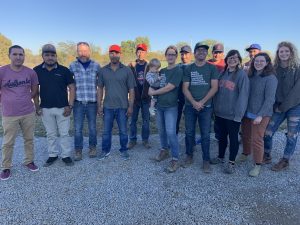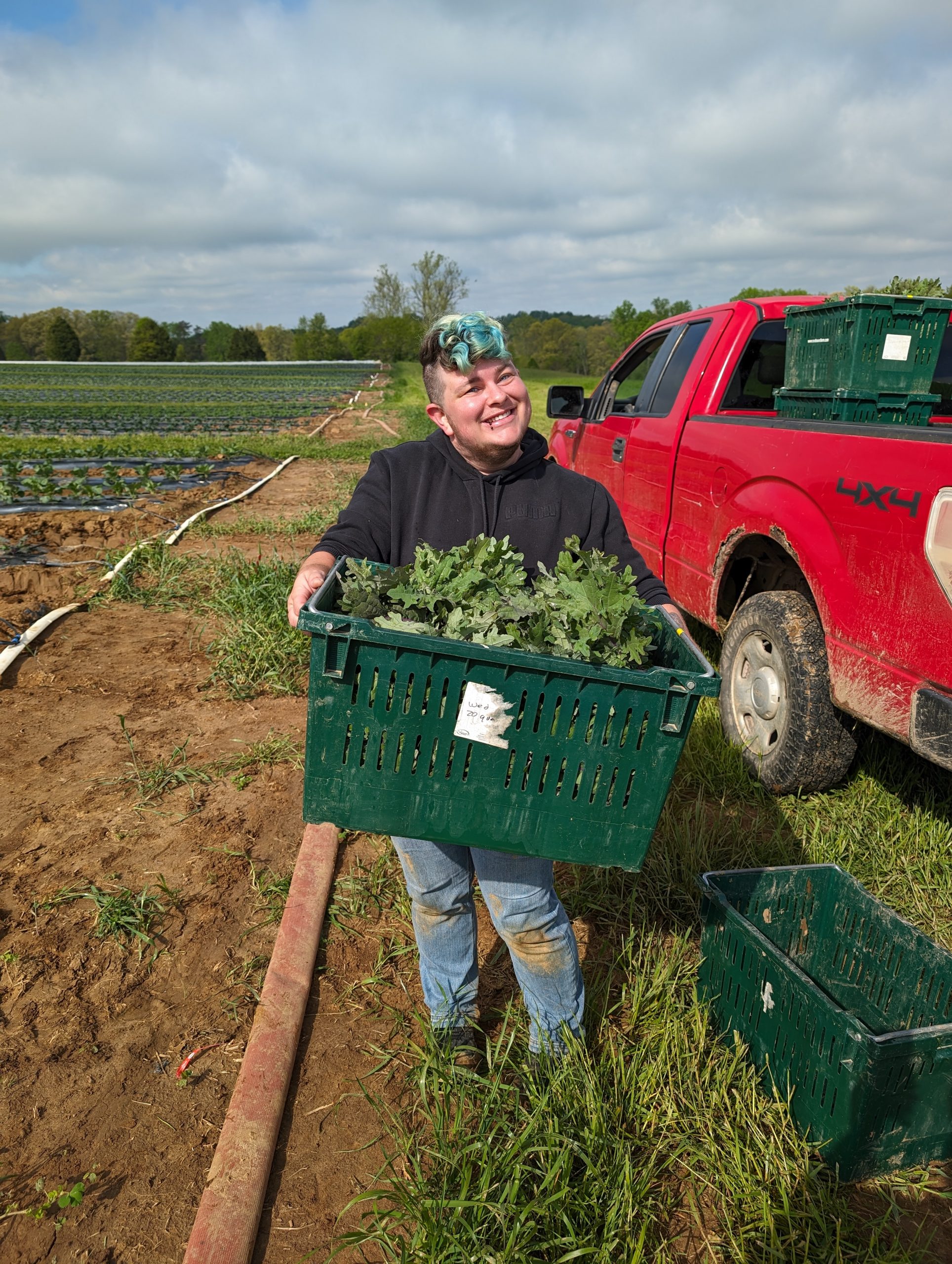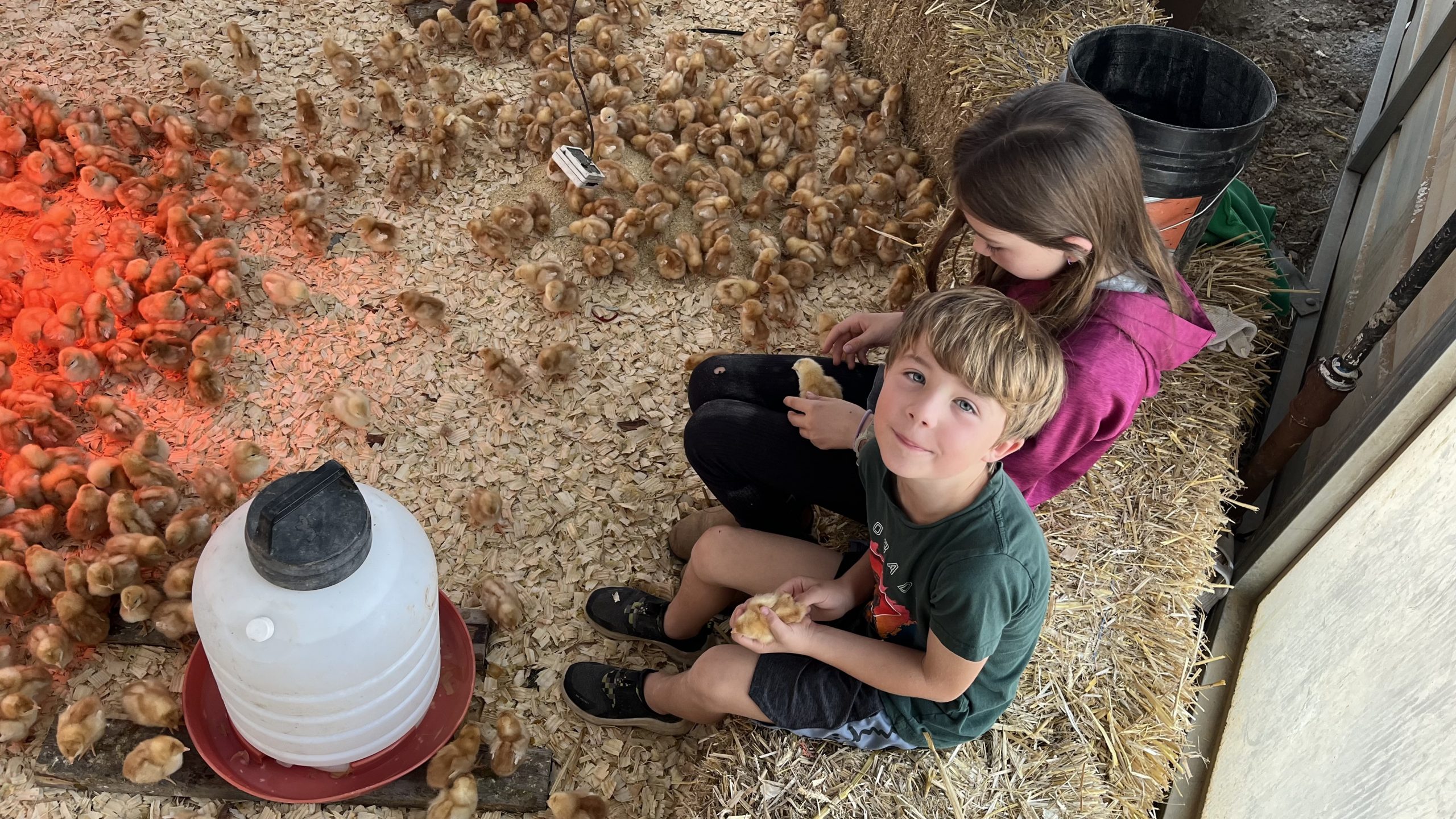Every season has its rhythm on the farm and we are settling in nicely to the new patterns of winter at Rootbound Farm. While we aren’t bringing in buckets of fresh tomatoes or wagonloads of watermelon, we’ve come to see that winter is perhaps the most critical time of the farming calendar year as we set in place the systems that will carry us through the busy summer months of intense production on the farm. If summer is about reaping the bounty that the land brings forth, the winter is about focusing on stewardship and the complex wheel that makes the full cycle possible. Winter is when we both learn from the previous season’s successes and mistakes and we lay the foundation for the coming year.
As the active growing season comes to an end for us in late October, we are in fields planting and protecting about 3 acres of Spring crops (strawberries, onions, garlic) that will over-winter in the fields tucked under protective woven-cloth covering. For the veggie beds that will be planted later in the Spring and through next growing season, we rushed to take advantage of the late fall window of opportunity to plant about 45 acres of cover crops such as rye and vetch to protect the soil, control erosion, and build soil organic matter over the winter.
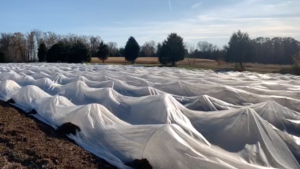
This fall has been exceptionally cold exceptionally early – we have already had over a dozen hard freezes on the farm and typically this time of year we would have had only two or three. We rushed to get all of the storage crops out of the fields and into safe storage where they can continue to provide us sustenance for the months to come (potatoes, carrots, winter squash, cabbage, radishes, etc.) We do not do any “protected” growing in greenhouses or high tunnels on our farm so we did lose some greens in the fields that typically would have hung on a little longer (collards, broccoli, kale). Those leafy greens will survive a freeze of 28 degrees, but drops into the low twenties will wipe them out.
Once again our dining room table is covered in beautifully bright pictures from seed catalogs. All of our seed orders are placed by mid-December and these days we are busy reviewing the previous year’s varieties, researching new varieties, and ultimately adjusting our crop plan to know what, when, and how much of each variety to plant. I estimate that the seed order process take us about 60 hours of time every winter.
In livestock news, our flock of 300 Katahdin sheep are settling into their winter routine of grazing stock-piled forage supplemented with hay that we mowed on the farm earlier this year. We are in the middle of breeding season as well so we have 4 rams that are breeding our 165 ewes that will all give birth to Spring lambs in March and April 2020. Our job now is to keep them comfortable and healthy with a good plane of nutrition so they can maintain body condition and healthy pregnancies over the winter months. With below freezing temps, the sheep chores take twice as long because we are battling freezing waterers and hauling hay through often muddy and difficult conditions. In my opinion, the animals are entering their most beautiful time of the year as their winter coats bulk up and they are fluffy and plump from high-quality fall-time forages.
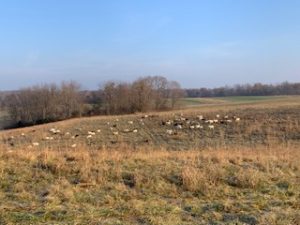
The hum and the rhythm of the farm definitely changes – almost abruptly after the last distribution day of our regular CSA program in late October. 7 of our 11 staff members go home to Mexico for the winter months for much cherished time with their families, and some of our local staff take the winter off to pursue other interests. We pair down to a team of two staff plus Ben and Bree and the days aren’t buttressed by washing and packing and delivery- instead we move into projects including repairs, maintenance, and construction, record-keeping, planning, and more. And for sure, there’s more time for hot tea, earlier bedtimes, and reflection.
